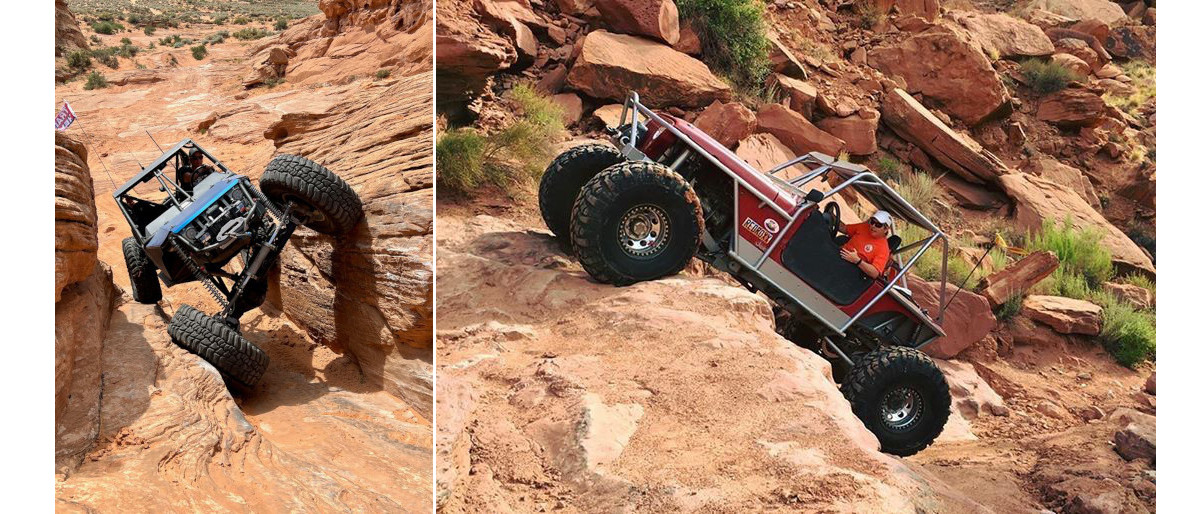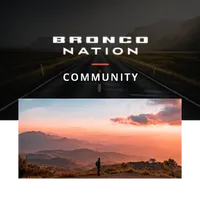Introduction on the fly, in the Glamis sand dunes
When I first started taking the 2021 Bronco Sport Badlands off-road, I was briefly shown the buttons that surround the G.O.A.T. modes dial. One of those buttons is labeled as a rear “locker,” which I was really excited about having in what I considered an AWD-type vehicle.
I’ve used lockers for years in my rock crawlers to help me gain traction to move down the trail. With a traditional locker, the differential is actually locked and forces the axle shafts to move together. Without a locker, the differential is open, and the power is pushed to the wheel with the least traction.

A differential is designed to allow the axles shafts to move at different speeds, making it possible to take turns smoothly as the outer wheel has to travel more distance than the inner one. In a trail situation, however, when a wheel is in the air or has no traction in dirt, sand, or mud, the power is pushed to that wheel and spins uselessly. At Bronco Off-Roadeo, we teach that without lockers, in effect, you really don’t have 4-wheel drive at all: You have 2-wheel drive –– one front wheel and one rear wheel. When a true locker is engaged, both wheels are forced to turn together, which helps with traction. You don’t want to use a locker on-road; it can damage a vehicle if used in high-traction environments like when turning corners on dry pavement.
So, is the Bronco Sport’s rear locker a “real” locker? It’s actually not locking anything, but the way it performs makes it smarter than the traditional locker in many ways. That then begs the question: If it’s not a locker, then what is it?
What is a twin clutch, and why do I care?

The Bronco Sport features an RDU (rear drive unit), which is supplied by DANA. This rear drive unit features two clutches, which is also called a twin clutch system. These clutches distribute torque to the wheel that needs it, and the clutches can handle both side-to-side as well as front-to-rear distribution of power.
When AWD is needed or the 4x4 button is engaged, those two clutches engage at the same time, which allows torque to go to the rear axle. When you then also engage the rear differential lock button, you are simply commanding more pressure, more often to those two clutches.

The Bronco Sport software responds to the driver by prioritizing increased traction over smooth driving. The clutches also respond to sharp turning, even while locked, and allow the differential to do its job in maintaining different wheel speeds, compared to a more traditional “locker,” which will not. This system is very efficient and has the capability of moving over 50 percent of the torque from the front to the rear wheels and nearly all of that rear torque can shift to a single wheel that has lost traction. Pretty cool, huh?
I’ll be the first to admit that I’ve done quite a bit of reading and research to better understand this RDU with twin clutches, and I still may not have it exactly right. I do know though, that regardless of whether it’s a true locker, it certainly does simulate what a locker does in low-traction situations and helps me move forward in my Bronco Sport.
If it looks like a horse, and sounds like a horse, is it a Bronco …
What is the conclusion to be drawn with the Bronco Sport? Well, to some, it may not be what you consider a “real” Bronco. Its 4x4 may not meet the definition of “real” 4-wheel drive, and it’s definitely not housing a real rear “locker.” But strangely enough, it gets me in many of the same places that those “real” things do. As a friend of mine used to say, “If you hear hoof beats, think horses, not zebras,” which means to look for the common, most obvious answer. If you see my Bronco Sport out in the dunes of Glamis, chances are it’s a real Bronco.

Comments
You must log in or register to post here.